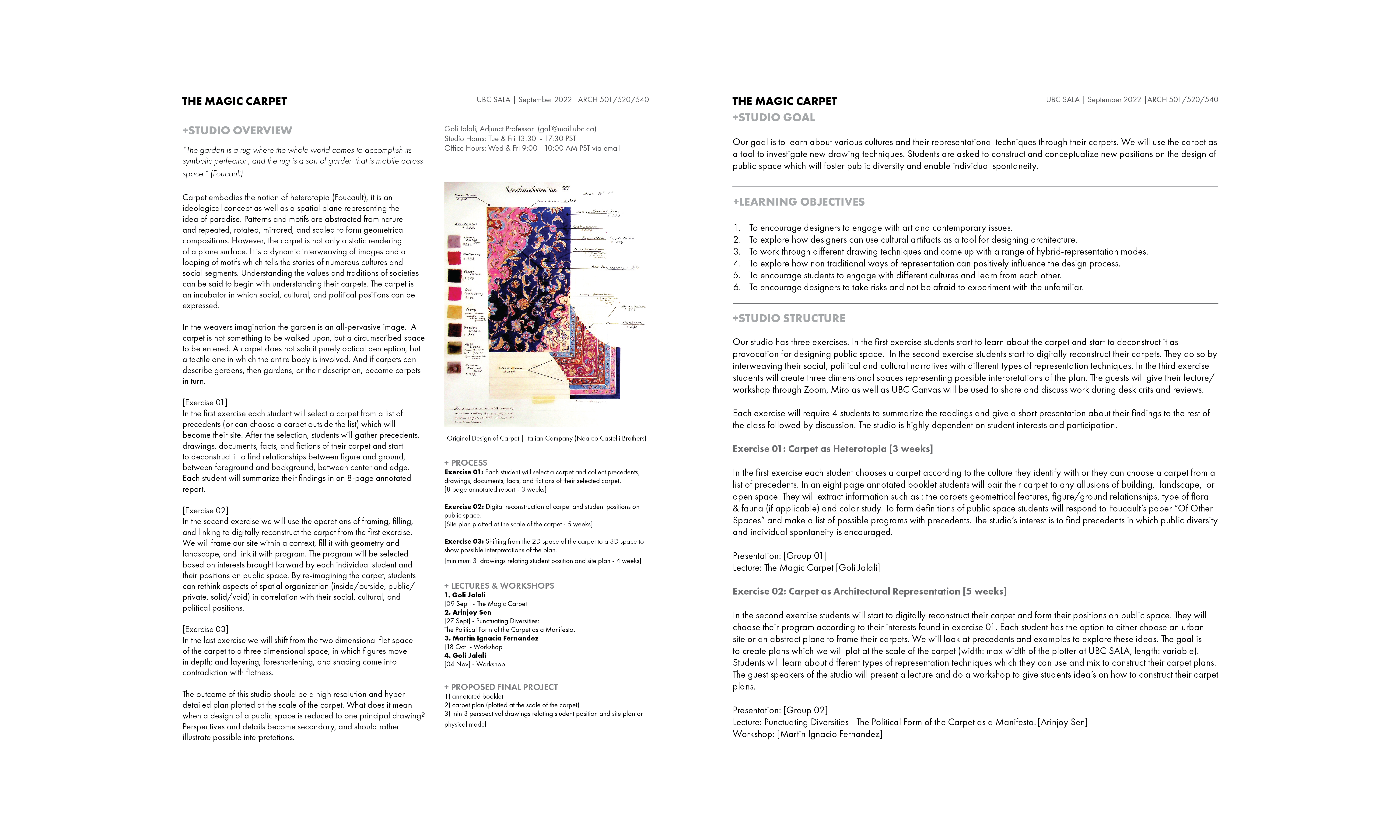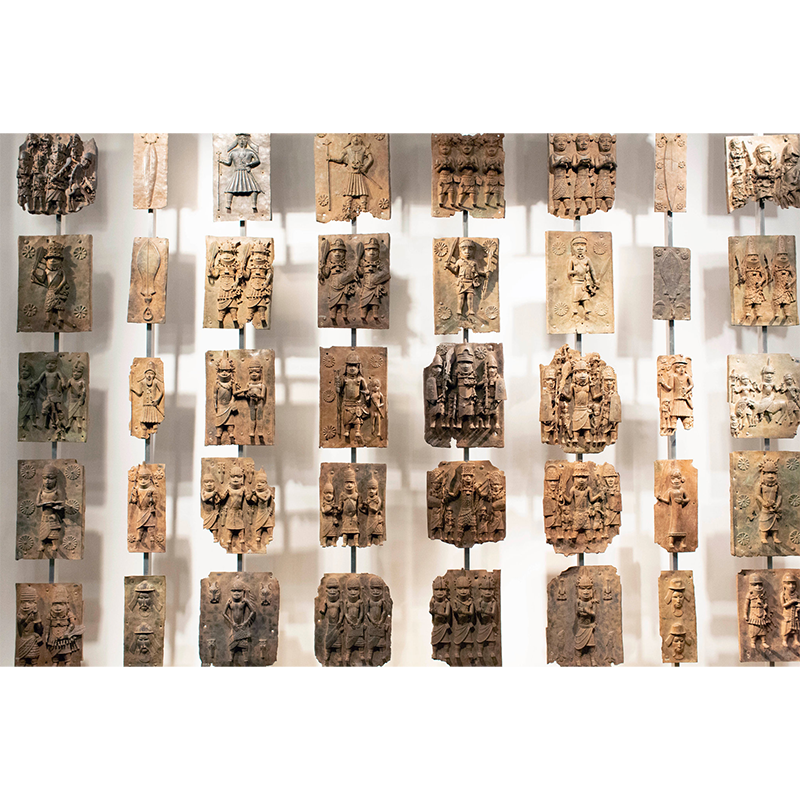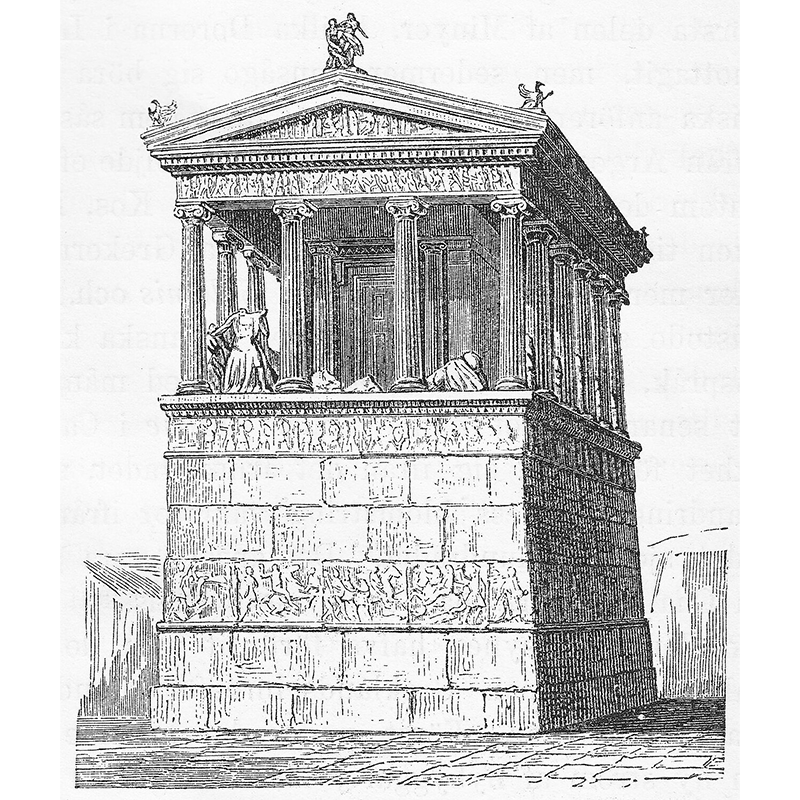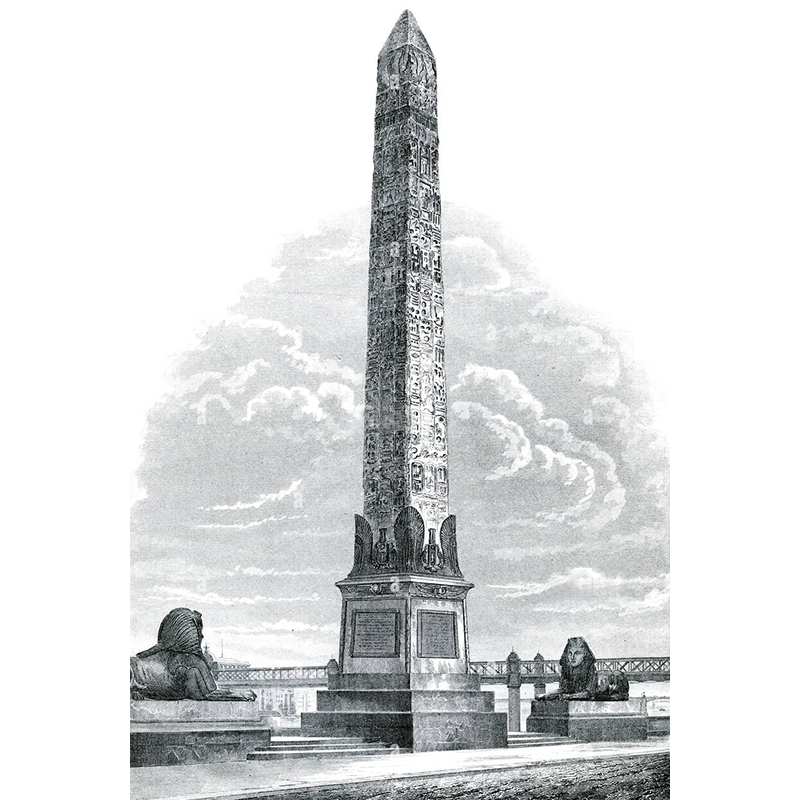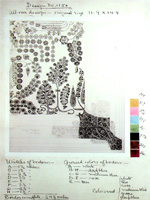the magic carpet i
This studio introduced the carpet as a tool for reimaginingpublic space through cultural storytelling and non-traditional architecturalrepresentation. Students began by selecting a historical carpet—often tied totheir own heritage—and deconstructed its motifs and geometries to uncoverembedded social, political, and spatial narratives. Through a series of drawingexercises, students reconstructed these surfaces into architecturalpropositions, culminating in large-scale carpet plans and interpretive three-dimensionalstudies. The studio emphasized historical reconstruction and the use ofartifacts as frameworks for spatial imagination.
organization
UBC SALA
collaborators
location
Vancouver, BC
date
2022



